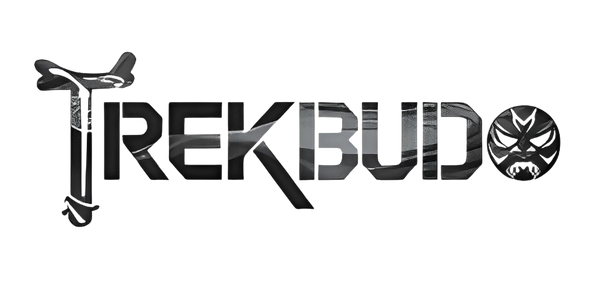What gear do beginners really need for ultralight backpacking?
Table of Contents
Introduction
New to ultralight backpacking? Welcome to the oddly satisfying obsession with shaving ounces off everything that isn’t your smile. If you’ve looked at your gear pile and thought, “what if I just… left most of this at home,” you’re my kind of hiker. The goal here isn’t suffering—it’s hiking farther with less fatigue. Before we dive into the gritty details, ground yourself with the classics: the Ten Essentials (non-negotiable) and a quick read on what pack weight actually excludes so you’re speaking the same language as the ounce-counters. Then we’ll talk about what you really need, what you can skip, and how not to start regretng life choices halfway up a switchback.
What Counts as Ultralight?
Let’s align on terms. Your base weight is everything in your pack minus water, food, and fuel (consumables), plus anything you’re not wearing. Under ~10–12 lb is commonly considered “ultralight,” and 12–20 lb is “lightweight.” If you’re starting in the lightweight zone, you’re doing great—comfort and experience matter more than hitting an arbitrary number on day one. Dial in your system as you gain miles.
The biggest wins come from the “Big Three”: shelter, sleep system, and pack. Get those right, and everything else is just fine-tuning. If you’re gear-curious and running-inclined, skim our primer on fastpacking—ultralight’s caffeinated cousin. You’ll pick up smart strategies for trimming redundancy while staying safe.
One more foundational tip: set realistic weight targets for water and food so you don’t erase your hard-won base-weight savings. A fast refresher: How much water should I carry? and How much food should I pack? will help you plan consumables intelligently by season and route.
Beginner Ultralight Essentials (The Real List)
1) Shelter you can pitch in the dark. If you can’t set it up cold, hungry, and in a breeze, it’s not your shelter. Trekking-pole shelters and tarp+bivy combos get crazy light, but a simple 1-person tent is still a win if it keeps you confident and rested. Confidence = better decisions.
2) Sleep system tuned to your actual nights. A 20–30°F quilt or bag plus an insulated pad (R≥3 for shoulder seasons) covers most beginners. Quilts save weight by ditching the insulation you compress under your back. Whatever you pick, test at home first—nothing burns stoke faster than a shivery night.
3) A pack that fits your body. Frameless packs shine once your base weight is already low; until then, a light framed pack can feel lighter in motion. Prioritize hip-belt transfer and shoulder comfort. Fit beats logo every time.
4) Honest kitchen. If you cook: a 550–750 ml pot, tiny canister stove, long-handle spoon, and a lighter + backup ignition. If you don’t: cold-soak jar, done. You’re not trying to open a bistro at 10,000 feet.
5) Water plan + simple treatment. Carry 0.5–1.0 L per hiking hour depending on heat/exposure, and always know the next source. Squeeze filters are the every-hiker option; chemical drops are lighter and dead-simple. Adjust carrying capacity to the route—not the other way around.
6) Food with calories per ounce that make sense. Most hikers land around 2,500–3,500 kcal/day. Shoot for 100–125 kcal/oz, pack what you’ll actually eat, and don’t bring a day-seven food mood to a day-two appetite.
7) Safety and nav that respect the Ten Essentials. Headlamp (fresh batteries), map/app redundancy, tiny first-aid, whistle, reliable fire, and an emergency insulating layer that still works when wet. Ultralight ≠ reckless.
8) Clothing system, not a closet. Hike in one set, keep one dry layer for camp and sleep. A puffy + wind/rain shell combo beats three random midlayers. Gloves and a beanie are tiny morale machines.
Consider the Hiking Shirt — “It’s Another Half Mile Or So” (T3A25)—made for the trail.
Top Outdoor Bestsellers
 Longsleeve Hiking T-Shirt Sometimes Motivation Finds You T1a25
Longsleeve Hiking T-Shirt Sometimes Motivation Finds You T1a25
What You Don’t Actually Need
Here’s where beginners save the most weight (and cash):
- Camp chairs: Your folded pad or a log works. Your spine will survive; your base weight will celebrate.
- Redundant midlayers: One active layer, one puffy, one wind/rain shell—done. If you’re cold, eat and walk.
- Full toiletry kits & giant multitools: Tiny knife, mini toothpaste, sliver of soap. Your dentist does not need to thru-hike with you.
- Oversized power banks: Estimate mAh/day, pre-download maps, airplane mode often. Carry the capacity you’ll actually use between charges.
Do a “shake-down” after every trip: spread your kit at home and remove anything you didn’t use (exclude emergency items). Track real weights with a kitchen scale and focus on the Big Three first. If you want a deeper dive into moving faster with less, skim our take on fastpacking and always cross-check with the Ten Essentials so you’re light but never reckless.
Finally, right-size your consumables every time. These two guides are your friends: How much water should I carry hiking? and How much food should I pack backpacking?. Get those right, and your base-weight victories actually show up on trail.
Conclusion
Ultralight is a mindset: prioritize function, trim redundancy, and iterate with experience. Start with a sensible Big Three, keep your kitchen honest, and right-size water and food to the route. You don’t need to buy everything on day one—you’ll figre it out faster by getting out there, learning what you actually use, and letting the miles be your teacher.


 Tree Of Life DNA Shirt For Nature Lovers Spiritual Gift T456a25
Tree Of Life DNA Shirt For Nature Lovers Spiritual Gift T456a25  Hiking T-Shirt Sloth Hiking Team T2a25
Hiking T-Shirt Sloth Hiking Team T2a25  In The Still Woods Shirt For Forest Lovers Gift Idea T461a25
In The Still Woods Shirt For Forest Lovers Gift Idea T461a25 


